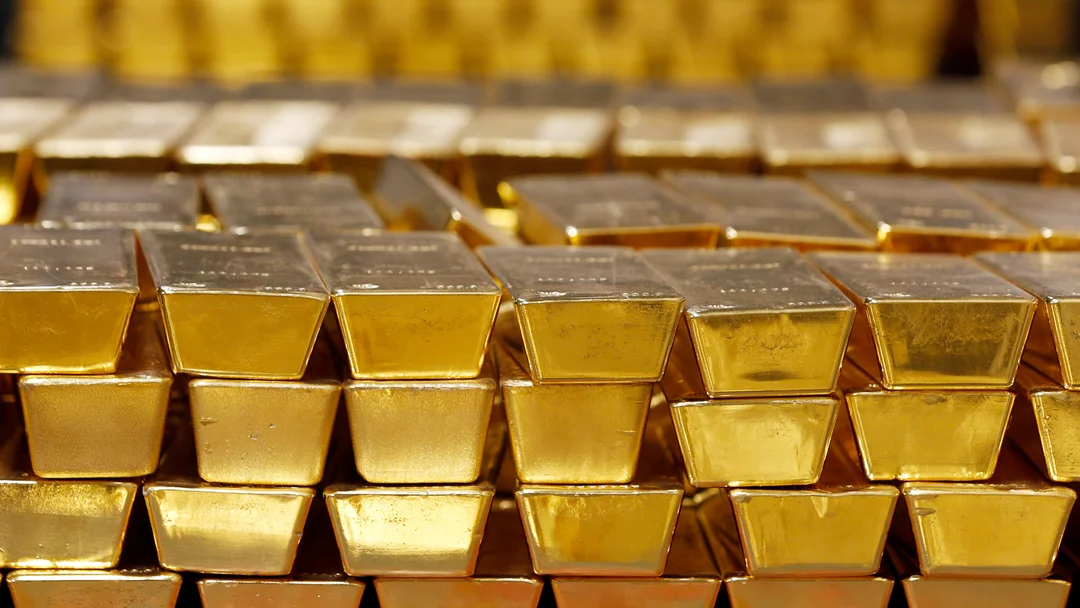
What Does the Surge in Gold Prices Mean for Investors Amid Trump’s Controversial Policies?
In an era of economic uncertainty, gold has once again captured the spotlight, reaching a staggering $3,500 per ounce as President Trump’s tumultuous relationship with the Federal Reserve stirs unrest among investors. The significance of this surge cannot be understated, especially as fears regarding trade wars intensify and Trump's aggressive stance against Fed Chair Jerome Powell raises concerns about the independence of this crucial financial institution.
On April 22, 2025, global investors flocked to gold as safe-haven assets. The record-setting price followed a rough day on Wall Street, prompting a mass sell-off of stocks and U.S. Treasury bonds, while the dollar dipped against major foreign currencies. The demand for gold surged over 30 percent since the beginning of the year, solidifying its position as a go-to investment during tumultuous times.
“Gold has again moved to yet another record, with its safe-haven reputation shining bright,” remarked analysts from RBC Capital Markets. This sentiment is echoed throughout the financial community, particularly as analysts point to Trump's erratic trade policies as a primary driver of market instability. As uncertainty looms, gold has displayed remarkable resilience, defying market predictions and outperforming expectations set by Wall Street banks.

Trump’s recent criticisms of Powell have not only rattled markets but also posed questions about the Federal Reserve's autonomy. Many investors perceive these actions as a direct threat, leading to increased volatility and hesitance in the market. David Solomon, CEO of Goldman Sachs, commented that “the level of uncertainty is too high. It’s not productive,” emphasizing the potential impact this tumultuous environment may have on economic growth.
As the dollar continues to waver, falling against currencies like the yen and the euro, the appeal of gold only intensifies. The precious metal's trading dynamics suggest a correlation; as the dollar weakens, gold prices tend to rise. This is especially relevant as the U.S. dollar index recently dropped from 99.38 to 98.38, marking the highest volatility seen in years.
Looking ahead, market experts anticipate potential further influences from international demand, particularly from China, where top insurers are now permitted to invest in gold. Such actions could lead to an even sharper rise in gold prices, prompting discussions and forecasts about the future of this asset.
In summary, the rising gold price is more than just a market trend; it is a reflection of broader economic anxieties and investor behaviors in response to political turbulence. As we move forward, one must ask: will gold continue its upward trajectory, and how significantly will ongoing U.S. policies shape our economic landscape? Share your thoughts below and join the conversation regarding the implications of this historic surge in gold prices.
Related issues news
Why is gold increasing?
Factors like global instability, inflation concerns and robust central bank buying have all contributed to gold's remarkable rise over the last few months. This perfect storm of economic conditions has also led more investors to turn to the precious metal as a safe haven for their wealth.
Why is the gold price high?
Gold futures have climbed almost 30% since the start of the year, while the S&P 500 index has fallen 10%, driven down by concerns over President Trump's tariffs. Gold often rises when the dollar weakens. That's because gold is priced in dollars, making it cheaper for holders of now-stronger overseas currencies.
How much is the gold price today?
Currently, the gold spot price for 1 ounce of gold in U.S. dollars (USD) is $3,438.38.
Is the price of gold going up?
Gold, which is considered a hedge against economic uncertainties and known to be a highly liquid asset, has hit multiple record highs and gained more than $700 since the start of 2025. It surpassed $3,300 last Wednesday and its strong momentum pushed it up by another $100 in just a few days.